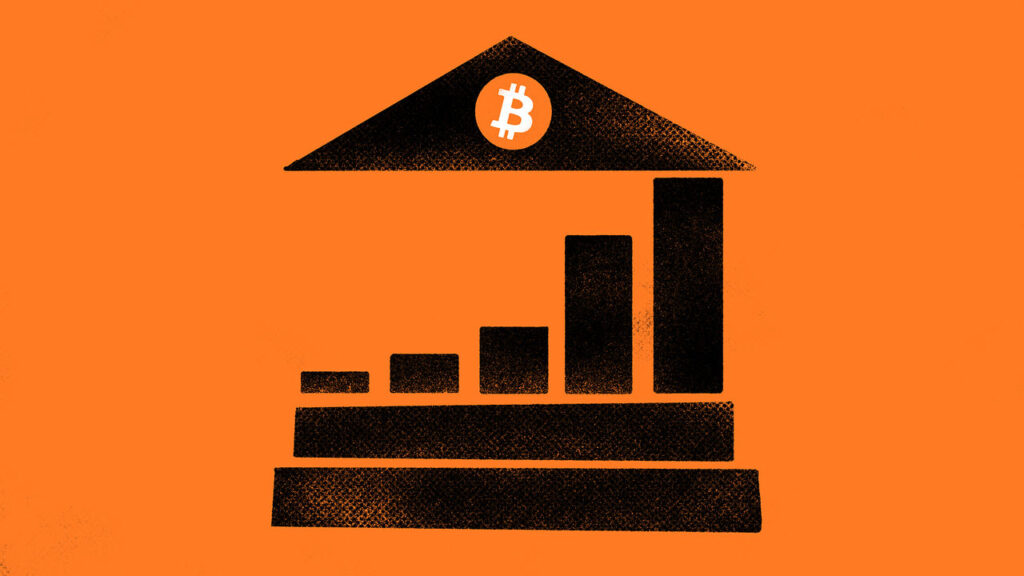The connection between digital assets and mainstream finance is experiencing significant growth, evolving into a more integrated and established relationship. This fusion, propelled by technological advancements and shifting consumer preferences, is reshaping how both individual investors and institutional entities approach their financial portfolios. As the landscape of finance continues to adapt, the blending of traditional financial systems with digital currencies and blockchain technology signifies a transformative shift likely to influence global markets profoundly.
One of the main drivers behind this strengthening link is the increasing acceptance of cryptocurrencies as a legitimate asset class. Historical skepticism surrounding digital assets, particularly Bitcoin and Ethereum, has diminished as institutional investors have begun to incorporate these cryptocurrencies into their investment strategies. Major financial firms, recognized names in the banking and investment sectors, are now offering cryptocurrency trading options, custodial services, and investment products, thus bridging the gap between the traditional and digital financial ecosystems. This acceptance is not merely a trend; it represents a pivotal moment where digital assets are being embedded into the broader financial infrastructure.
In addition to institutional adoption, regulatory clarity has played a vital role in fostering this relationship. As governments and regulatory bodies in various jurisdictions devise frameworks to oversee digital currencies, there is an increasing level of comfort for both businesses and investors. Legal definitions of cryptocurrencies, tax guidelines, and compliance requirements are becoming more standardized, enhancing trust and encouraging wider participation in the crypto markets. For instance, the European Union has been working on the Markets in Crypto-Assets (MiCA) regulation, aiming to create a comprehensive regulatory environment for digital assets that could serve as a model for other regions.
Furthermore, the demand for digital assets is being driven by a new generation of retail investors who are technologically savvy and comfortable navigating online platforms. This demographic seeks alternative investments beyond traditional equities and bonds. With the proliferation of user-friendly trading apps and platforms offering access to varied cryptocurrencies, even those with limited financial knowledge can now engage in crypto trading. The ease of access and the potential for high returns make digital assets an attractive option, prompting a surge in retail participation.
Recognizing this shift, many banks and financial institutions are developing products that cater specifically to this burgeoning market. From cryptocurrency ETFs (Exchange-Traded Funds) to futures contracts, these financial instruments provide more structured ways for investors to gain exposure to digital assets. Additionally, decentralized finance (DeFi) has emerged as a revolutionary aspect of the digital finance landscape. Driven by blockchain technology, DeFi platforms allow users to borrow, lend, and trade without intermediaries, offering novel financial services that challenge the traditional banking model.
The integration of digital assets into mainstream finance also presents numerous challenges that must be addressed. Issues regarding security, volatility, and the risk of fraud remain prominent concerns. The landscape of digital currencies is characterized by its rapid fluctuations in value, which can deter risk-averse investors. Furthermore, cybersecurity threats continue to pose significant risks, with breaches and thefts in the crypto space making headlines. It is crucial for regulators and industry stakeholders to collaborate to establish robust security measures and risk management frameworks to safeguard investors.
Despite these challenges, the momentum toward a closer relationship between digital assets and conventional finance is unlikely to wane. As technology continues to evolve, innovations such as blockchain advancements, smart contracts, and stablecoins are poised to enhance the usability and acceptance of digital assets further. The emergence of central bank digital currencies (CBDCs) is another aspect that could dramatically change the financial landscape. With several countries actively researching or piloting their own CBDCs, the potential to interlink digital currencies with traditional fiat systems presents an unprecedented opportunity for economic growth and financial inclusion.
In conclusion, the strengthening bond between digital assets and mainstream finance indicates a transformative evolution in how financial systems operate. As digital currencies gain legitimacy, accompanied by supportive regulatory measures and the increasing participation of both retail and institutional investors, the future of finance appears to be on the cusp of a revolutionary phase. While challenges remain, the ongoing integration of these two worlds promises to shape the financial landscape for years to come, creating new opportunities and redefining the way individuals and institutions manage their investments.









